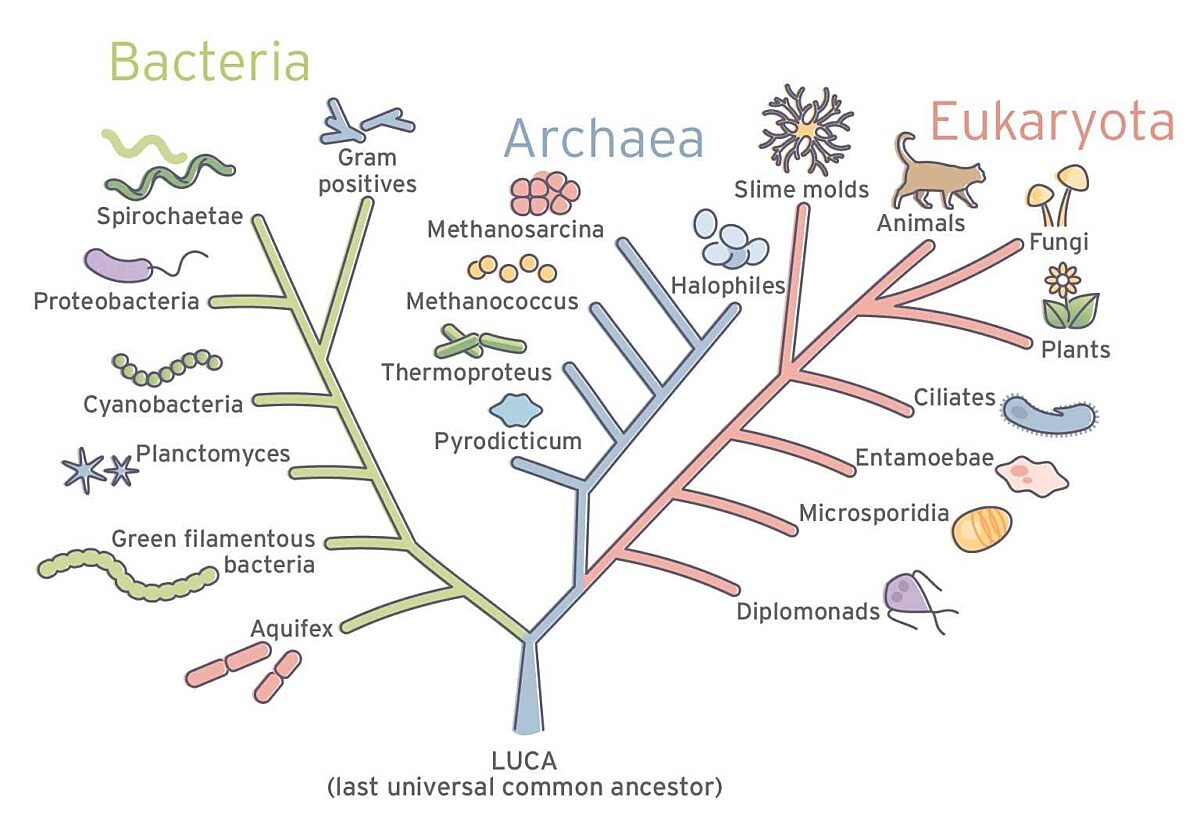Connecting ancient life to other worlds
In the final episode of “Star Trek: The Next Generation,” Captain Picard and the godlike entity Q travel to Earth’s ancient past. Volcanoes dominate the landscape, and sulfur fills the air. Q points out a green puddle where a group of amino acids is about to combine and form the first protein, marking the beginning of life on Earth.
“This is you,” Q says as he dips his hand into the puddle. “Everything you know, your entire civilization, it all begins right here in this little pond of goo.”
At The Planetary Society’s Search for Life Symposium in February 2024, Betül Kaçar used an image from this scene in her presentation on how understanding ancient Earth life can help us search for life on other worlds.
Kaçar is an associate professor of bacteriology at the University of Wisconsin-Madison, where she and her colleagues are using artificial DNA to reconstruct some of the earliest living organisms and study how they may have evolved into life as we know it today. What they learn will be helpful as we examine the atmospheres of Earthlike exoplanets, looking for signs of life as we know it and how it may have existed billions of years in the past.
“As someone who studies the origin of life and its early evolution, I’m interested in connecting what we learn from our past to finding life elsewhere,” Kaçar said. “‘Star Trek’ has been quite influential.”

Searching for LUCA
In 1952, the chemists Stanley Miller and Harold Urey conducted a series of now-famous experiments in which they replicated the conditions of early Earth. Using a system of glass flasks and tubes, they applied sparks of electricity to a mixture of methane, ammonia, hydrogen, and water. After about a week, they discovered the chemicals had organized themselves into amino acids, some of which are found in all living things. The implication was that a soup of basic chemicals may be able to evolve into life if given the right conditions — a theory called abiogenesis.
When can you call a puddle of chemicals life? While this philosophical question has long been debated, Kaçar said that life can be thought of as “chemical intelligence,” or chemistry with memory that allows it to respond to challenges in the same way over time.
Kaçar is interested not only in how life began but how it evolved into LUCA, our last universal common ancestor. LUCA was an ancient population of organisms with a shared set of traits that became the ancestor of all living things. From it sprung bacteria (single-celled organisms) and archaea (similar to bacteria but can live in more extreme conditions). Eukaryotes, organisms that contain cells with a nucleus, such as plants, animals, and humans, either evolved directly from LUCA or as part of a symbiotic relationship between bacteria and archaea.

“It’s not just about having the right chemistry at the right time in the right condition,” Kaçar said. “You also need to understand how to bridge the origin of life to our last universal common ancestor. Biology offers observational and experimental testbeds of genuine, multilevel complexity in a way that no other chemical or physical system alone can.”
Scientists have been attempting to construct a genetic portrait of LUCA by tracing the genes of living things back through time. In recent years, they have hypothesized that it may have lived near hydrothermal vents on the ocean floor, where all it required were water, rocks, and heat. A similar situation could be happening deep within the subsurface oceans of moons like Europa or Enceladus.
Kaçar believes that figuring out how the first life on Earth evolved can lead to unique biotechnological applications. She and her colleagues use artificial DNA to reconstruct ancient life in the lab and then study it in the chemical conditions that may have existed on early Earth. Her group recently created a cookbook of hundreds of chemical recipes with the potential to give rise to life. This will help them put together a more complete picture of how chemical intelligence actually evolved. Her lab is one of the few in the world to combine synthetic biology and evolutionary engineering to understand the origins and early evolution of life on Earth.

Universal chemistry
Chemistry, as far as we know, is universal throughout the Cosmos. That means if we can get a clearer picture of how life evolved on early Earth, we can apply that knowledge to other worlds. Kaçar said this will come down to understanding how evolution operates at the dawn of life.
With missions like JWST already scanning the atmospheres of Earthlike exoplanets and new powerful ground- and space-based telescopes coming online in the future, scientists will need all the help they can get to interpret what they are seeing.
“When our colleagues look through their amazing telescopes, we want to be able to guide them properly: ‘Here are the possible chemistries that can lead to life, and here are feasible environments in which that chemistry can exist,’” Kaçar said.
With so many promising tools and technologies available, there’s never been a better time to explore our origins.
“We are at the cusp of figuring out something quite fundamental about ourselves and life on Earth,” said Kaçar. “And that will profoundly shape the way we look for life in the Universe and ultimately, our place in it.”
Support our core enterprises
Your support powers our mission to explore worlds, find life, and defend Earth. You make all the difference when you make a gift. Give today!
DonateThe Planetary Report • September Equinox
Help advance space science and exploration! Become a member of The Planetary Society and you'll receive the full PDF and print versions of The Planetary Report.


 Explore Worlds
Explore Worlds Find Life
Find Life Defend Earth
Defend Earth


